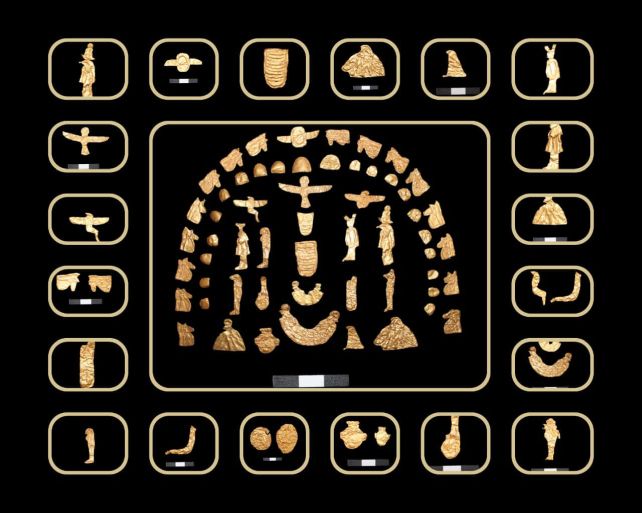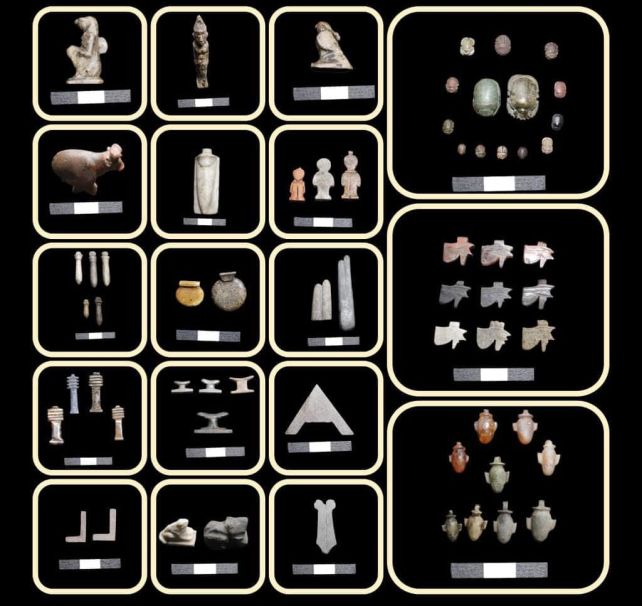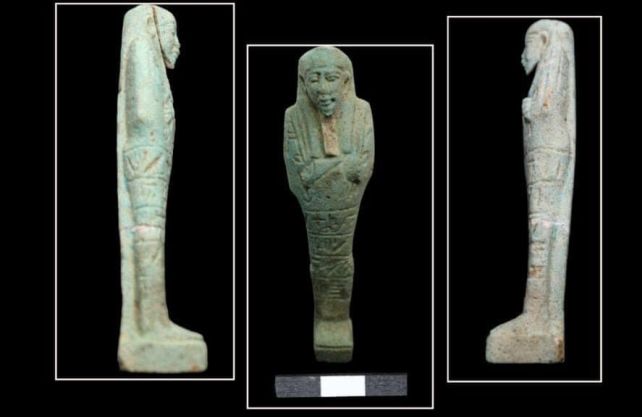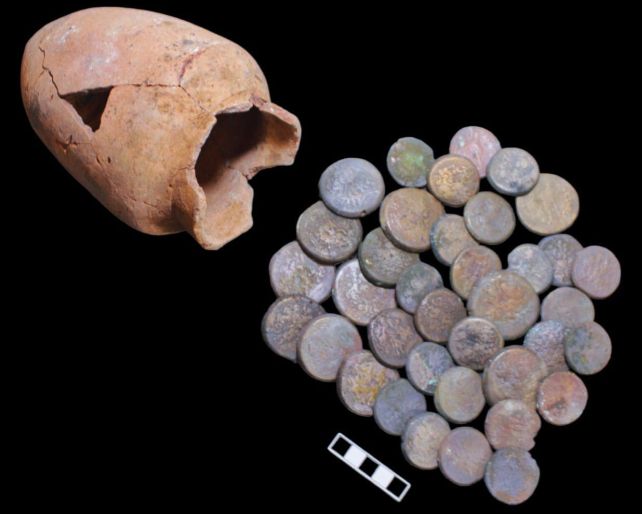An extremely rare discovery has just been made in the ancient Egyptian necropolis of Tel el-Deir in Damietta.
There, excavations have revealed dozens of burials that have been untouched for millennia; mudbrick chambers that still contained the precious treasures with which the dead had been interred more than 2,500 years ago.
Those treasures include pottery vessels, funerary amulets and scarabs to protect the deceased in the afterlife, ushabti figurines to serve the deceased in the afterlife, bronze coins, and gold foil representations of religious symbols and deities such as Isis, Bastet, and Horus.

The discovery is unusual because many ancient Egyptian tombs have been looted since the time of the pharaohs, often leaving very little behind. Intact burials give us a better insight into the funerary customs of the ancient Egyptians and can, according to Mohamed Ismail Khaled, Secretary General of the Egyptian Supreme Council of Antiquities, help uncover the secrets of an ancient, fascinating culture.
The archaeological mission at Tel el-Deir has been ongoing for several years, gradually uncovering a burial complex that dates back to the 26th Dynasty, between 644 and 525 BCE. A previous dig yielded 20 tombs, including amulets, gold foils, scarabs, and miniature canopic jars, the vessels into which the deceased's organs are placed during the mummification rites.

Since then, the excavations have yielded not just 63 individual mudbrick tombs, but simpler burials, too. The necropolis seems to have hosted all kinds of burials, from humbler ones to the more richly appointed final resting places of people with higher status.
What the team was extremely interested to discover was the architectural layout of the complex. This design is common throughout the Late Period of ancient Egypt, which began with the 26th Dynasty.

This "emphasizes the historical significance of this discovery, which may be the beginning of the re-dating of an important period of time for the city of Damietta", the Egyptian Ministry of Tourism and Antiquities said in a statement.
Interestingly, the 38 bronze coins found in a ceramic jar are dated to the Ptolemaic dynasty, which reigned from 305 to 30 BCE – several hundred years after the complex was built. This suggests that Damietta was an important commercial hub for quite some time during the history of ancient Egypt, the archaeologists say.

The artifacts uncovered are of spectacular craftsmanship, the archaeologists said, showcasing a wide range of skills, access to materials, and even trade between other Mediterranean coastal cities, with some of the pottery vessels having been imported to Egypt.
Even looted and pillaged graves can teach us a lot about the ancient world, but the discoveries highlight just how much more about our history we can learn when the dead are left to rest in peace… at least until the archaeologists arrive.
